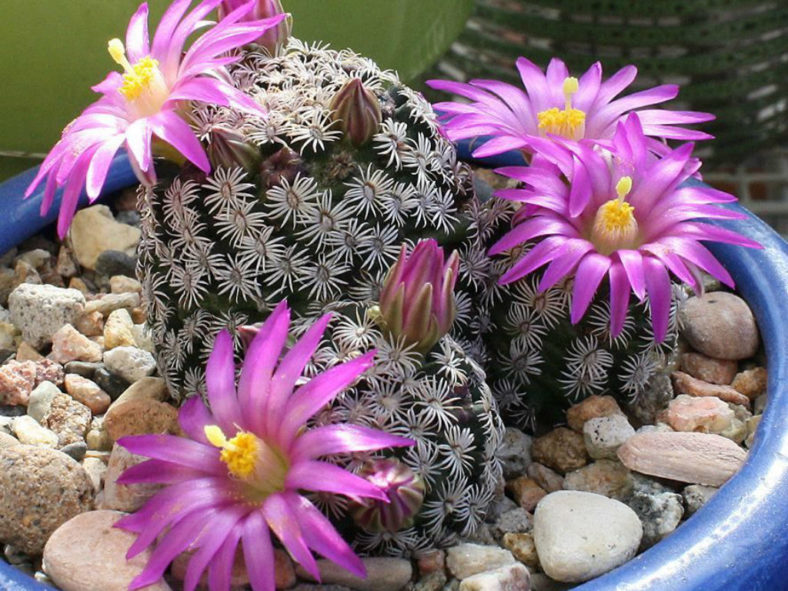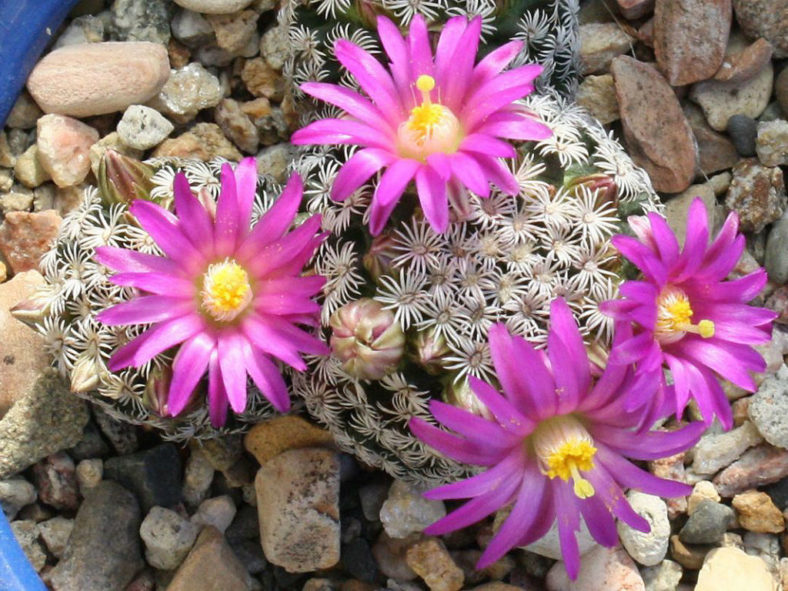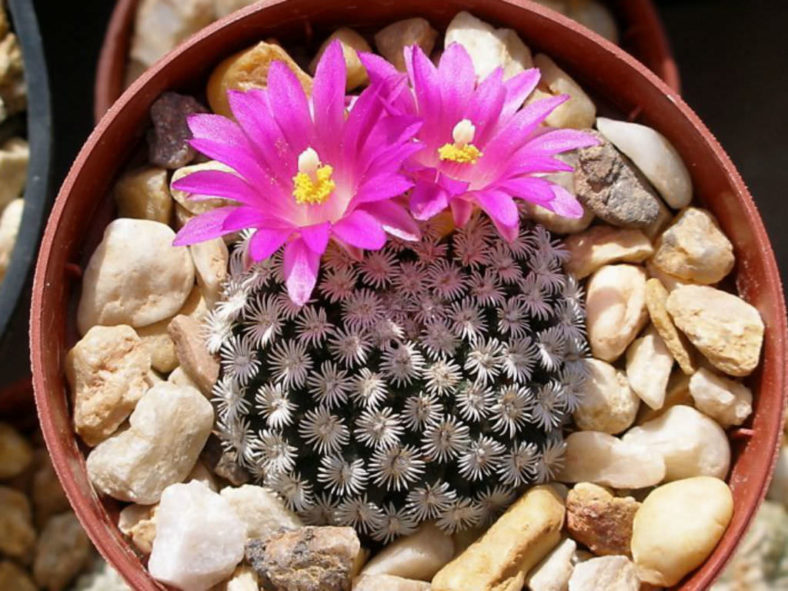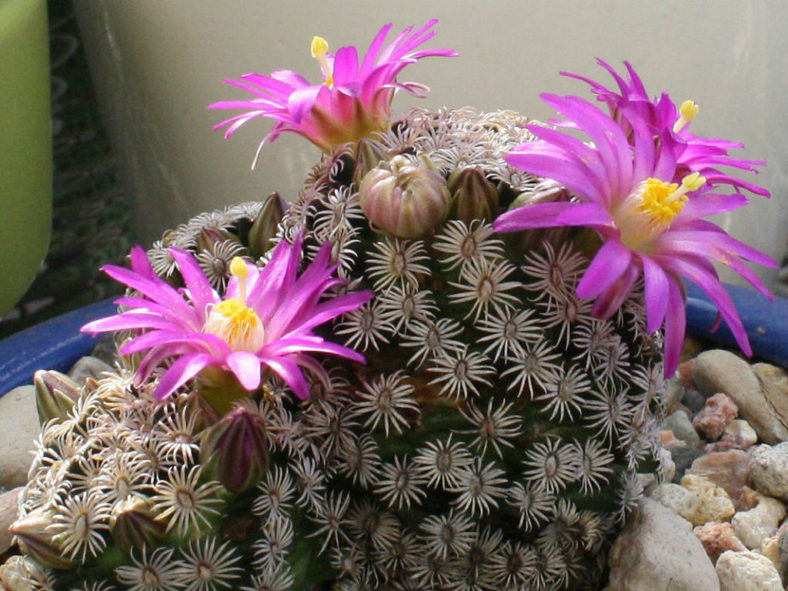Scientific Name
Mammillaria hernandezii Glass & R.C. Foster
Synonym(s)
Bartschella hernandezii
Scientific Classification
Family: Cactaceae
Subfamily: Cactoideae
Tribe: Cacteae
Subtribe: Cactinae
Genus: Mammillaria
Etymology
The specific epithet "hernandezii (her-nan-DEZ-ee-eye)" honors Eulalio Hernández, nephew and collaborator of the Mexican collector Felipe Otero.
Origin
Mammillaria hernandezii is native to central Mexico. It occurs in a small area of upland tropical pine scrub in Oaxaca.
Description
Mammillaria hernandezii is an attractive small cactus with a spherical, usually solitary stem with pyramidal tubercles, each with an areole with white spines at the tip. The dark green stem can grow up to 1.8 inches (4.5 cm) in diameter. In the axils, between the tubercles, there is short white wool. The spines are slightly curved backward and measure up to 0.1 inch (0.25 cm) long. Each areole bears 17 to 25 radial spines. The central spines are absent.
The diurnal flowers are funnel-shaped, cherry red to light magenta or rarely white, and can reach up to 1 inch (2.5 cm) in length and diameter. They appear in fall or winter, sometimes even in spring. The fruits remain inserted inside the stem and contain black seeds.

Hardiness
USDA hardiness zones 9b to 11b: from 25 °F (−3.9 °C) to 50 °F (+10 °C).
How to Grow and Care
To encourage better flowering, allow the plants to enjoy a cooling period in the winter and suspend watering. Unlike many other cacti, which use their ribs as storage devices, Mammillaria feature raised tubercles, from which spines emerge. When you water, the tubercles will expand to increase water storage. The flowers emerge from the axils of these tubercles on the previous year's growth, which accounts for their interesting halo effect. The cactus mustn't be exposed to prolonged dampness and sitting water. Never let your cactus sit in a dish of water. Lastly, ensure to fertilize during the growing season for the best results.
Repot as needed, preferably during the warm season. To repot Mammillaria, ensure the soil is dry before repotting, then gently remove the pot. Knock away the old soil from the roots, removing any rotted or dead roots. Treat any cuts with a fungicide. Place the plant in its new pot and backfill it with potting soil, spreading the roots as you repot. Leave the plant dry for a week or so, then begin to water lightly to reduce the risk of root rot.
See more at How to Grow and Care for Mammillaria.
Links
- Back to genus Mammillaria
- Succupedia: Browse succulents by Scientific Name, Common Name, Genus, Family, USDA Hardiness Zone, Origin, or cacti by Genus
Photo Gallery
Click on a photo to see a larger version.


